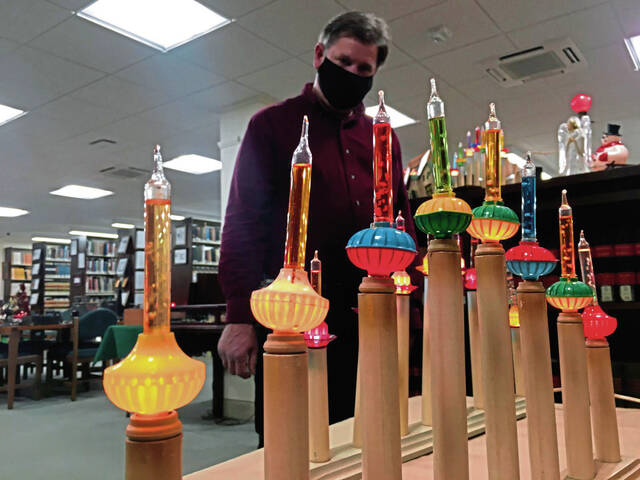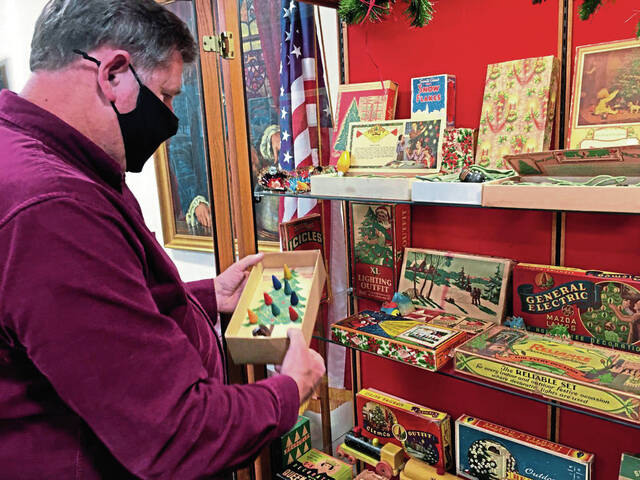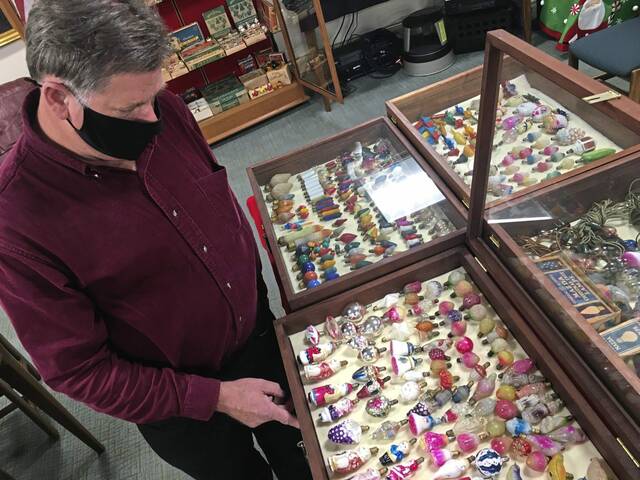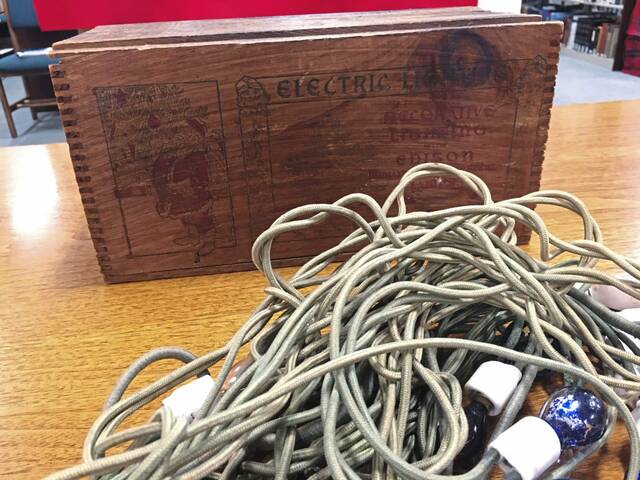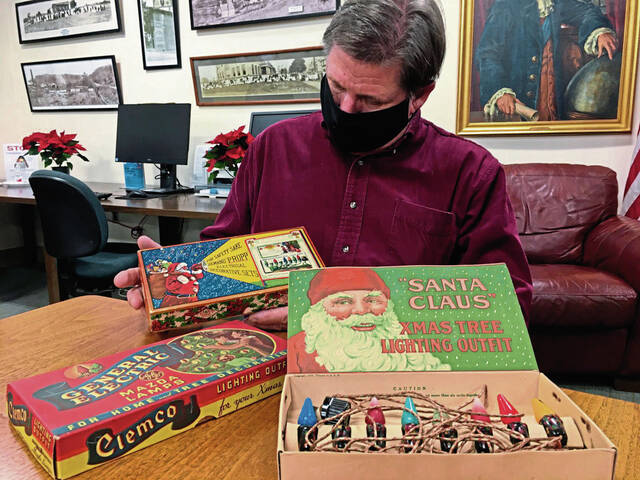Switched on Christmas: Collector exhibits vintage holiday lights at Ligonier library
Tiny bubbles at the holiday season may bring New Year’s Eve champagne toasts to mind.
Don Lachie delights in bubbles of a different type — ones that are enjoyed by viewing instead of imbibing.
Christmas tree lights that bubble instead of twinkle came into vogue in the late 1940s and are among a variety of vintage and antique illuminated holiday decorations the Youngwood collector is displaying through Jan. 18 in Ligonier Valley Library’s Pennsylvania Room.
“They all have their own personality,” Lachie said of the candle-shaped, liquid-filled bulbs, which he has arranged on candoliers instead of a tree. “Some bubble vigorously and some don’t. Some shoot up a bubble every now and then, and some are late starters.”
The bubble lights are one of the more eye-catching types of the 40-some varieties Lachie has in his collection.
The lights were devised by Carl Otis, an accountant for Montgomery Ward department store, and were marketed by the NOMA Electric Corp. According to Lachie, most are filled with methylene chloride under vacuum.
“The heat of the light bulb makes it bubble,” he said. “They were a big hit.”
For the brief time that Otis’ patent was considered valid, other companies used different liquids in their bubble lights to avoid infringing on his patent. But after a judge invalidated his patent, all companies were free to use the same liquid.
“They only made them for a few years,” Lachie said of the alternate bulbs. “They’re pretty scarce and pretty valuable. They will go for $75.”
Lachie’s display includes early figural light bulbs imported from Japan, Germany or Austria, in shapes ranging from tiny Santas and bells to dirigibles and a cat playing a mandolin.
He has examples of colorful bulbs shaped like songbirds and pigeons. His favorite is a multihued light set featuring textured glass facsimiles of pine cones.
In each case, the manufacturer cleverly disguised the exhaust tip — the end of the bulb that was twisted off after air was pumped out — as the end of the bird’s beak or the tip of the cone.
“Around 1910, the manufacturers began hiding the exhaust tip in the base,” Lachie said.
Lachie’s collection is where his love of the holiday season intersects with his enthusiasm for electrical equipment.
“I’ve always had an interest in electricity, and Christmas is a happy time of the year, so it appealed to me,” he said.
Lachie has exhibited his Christmas lights for several years at the library and, before that, at the Lincoln Highway Experience museum in Unity.
He’s added to his array of lights by bidding on eBay and by visiting antique shops and an annual show of vintage holiday items in Ohio.
Poinsettias, holly and depictions of Santa were common motifs used on early Christmas light packaging, which has become another category of prized collectible for vintage holiday enthusiasts.
“Sometimes half the value, even more, is in the boxes,” Lachie said. “I try to acquire either boxes only or light sets only. A lot of times you can match the two up.”
Electric Christmas lights first became available for household use at the end of the 19th century and were touted as a safer alternative to decorating trees with candles or fairy lights, Lachie said. He has some examples of the latter.
“It’s a glass holder that you would fill up three-quarters of the way with water,” he said. “In the top part, you would put cooking oil and you would use floating wicks.”
Before 1904, when Christmas lights became available in pre-assembled sets, adding them to one’s holiday decor was no easy task.
“Before that, you had to buy the sockets, you had to buy wires, you had to buy the power connections, and you had to hire an electrician to put it together,” Lachie said. “They were called wiremen back then.”
Early light sets were a luxury item. Lachie has a few antique sets that were packed in wooden boxes. “A set of 24 cost about $6 at the time,” he said. “That was about a week’s wages.”
The ultimate treasure for Lachie and many other collectors would be acquiring one of the holiday lights used by Edward Johnson, an associate of Thomas Edison who is said to have displayed the first electrically lit Christmas tree in 1882 in his New York City home.
“They had no socket,” Lachie said of the pioneering lights. “It was just a glass envelope with a filament inside and two bare wires coming out of it.
“Some of them are in museums.”
Jeff Himler is a TribLive reporter covering Greater Latrobe, Ligonier Valley, Mt. Pleasant Area and Derry Area school districts and their communities. He also reports on transportation issues. A journalist for more than three decades, he enjoys delving into local history. He can be reached at jhimler@triblive.com.
Remove the ads from your TribLIVE reading experience but still support the journalists who create the content with TribLIVE Ad-Free.

